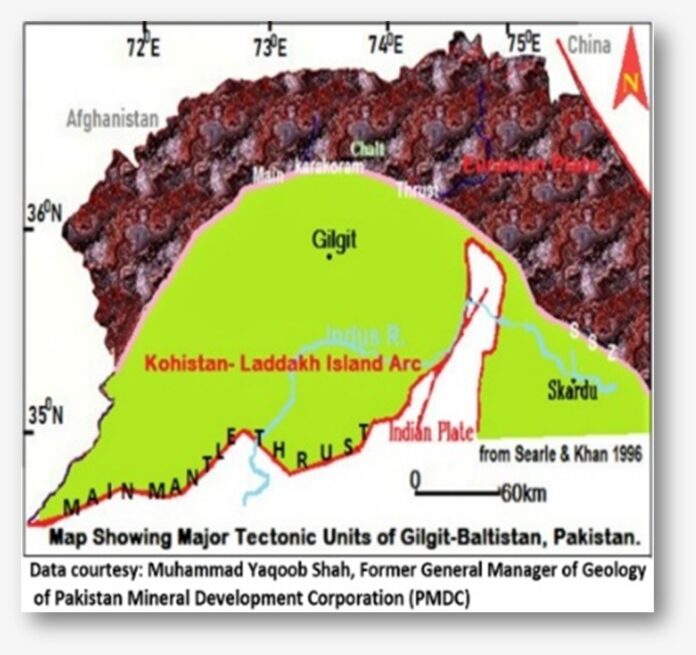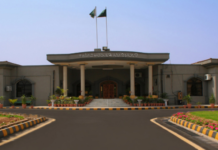ISLAMABAD: Pakistan is blessed with extensive deposits of vanadium, a chemical element, which needs to be tapped for socioeconomic and strategic benefits.
Discussing the potential of the metal with WealthPK, Muhammad Yaqoob Shah, principal geologist at Global Mining Company Limited, Islamabad, recalled that Pakistan Mineral Development Corporation (PMDC) in collaboration with the Australian government had conducted a geochemical exploration and evaluation of gold and base metals in Gilgit-Baltistan from January 1992 to June 2001 to find the green field exploration targets based on minus 80 mesh chemical samples.
“The analysis report of the Ultra Trace Labs, Perth, Western Australia, had identified 22 samples containing vanadium between 500 to 1000g/t. Such type of results makes it mandatory to quantify the reserves and grade establishment,” he explained.
Yaqoob Shah, who is also the former general manager of geology at PMDC, further said vanadium should be classified as the top priority assignment for strategic and socioeconomic interests of Pakistan. He said naturally vanadium didn’t exist in its metallic form, but was found in some crude oils as organic complexes and as a trace element in more than 65 minerals, particularly vanadinite, carnotite, patronite, roscoelite, etc. “Its most considered principal ore minerals are magnetite, ilmenite, hematite, rutile, etc. The average grade of V2O5 ore ranges from 0.16%-0.39%,” he explained.
Counting the uses of the metal, Yaqoob Shah said: “It never deforms under high temperatures. The metal reduces the weight of a product to 30% by increasing its strength to 100%. Adding it with titanium causes the ideal strength-to-weight ratio of any engineered metal. The mixed alloy of vanadium, titanium, and aluminium is used to produce jet engines and high-speed airframes. Due to its low neutron absorption ability, its alloys are used in nuclear reactors. To form superconductive magnets, it is combined with gallium.”
Moreover, he said the tectonic map of Gilgit-Baltistan shows that all the samples collected mostly from the Kohistan-Laddakh (KL) Island arc sequence of rocks were situated between two continental plates – Indian and Eurasian, separated by Main Mantle Thrust (MMT) and Main Karakoram Thrust (MKT). “The KL Terrane in GB consists of multiple rock and earth formations, i.e., layered mafic and ultramafic rocks, meta-plutonic rocks, metamorphosed marine, and volcanic sediments, etc.”
He said further intrusion there is of a variety of major and minor ranges of tholeiitic, calc-alkaline plutons and their volcanic equivalent pegmatites, aplites, etc. “This particular arc characterises a host of geological environments together with Island and Cordellerin arcs, post-collision crustal melt intrusives, and deep crustal level mafic and ultramafic cumulate complexes. This type of geological cluster is considered the nursery of unique minerals and metal formations. On the basis of this statement, sulfide zones within the layered ultramafic rocks of Chalt, Chilas complex, and Shamaron/Teru volcanics can be the potential sites to find vanadiferous titanomagnetite (VTM) deposits,” explained Yaqoob Shah, who is also a member of the National Council for Marble & Granite and Minerals.
By the year 2030, the global vanadium market is projected to grow to $12.5 billion at a compound annual growth rate of 6.1% from $4 billion in 2021. Silvery grey vanadium is the fifth most abundantly found and sixth strongest transitional metal in the earth’s crust.
Less than 1% of its addition in steel doubles its strength and turns it superbly resistant to corrosion, shock and vibration. It is widely used for different health-related and industrial purposes, i.e., to manufacture smart windows, used as an alloy to strengthen steel and titanium (used to construct bridges, buildings, tools manufacturing, armour plates, and automobile parts, i.e., axles, rods, pistons, crankshafts, etc.); as a catalyst, it is used in the chemical industry, sulfuric acid production, petroleum cracking, synthesis of rubber and some high molecular compounds, to produce dyes; as a pigment in the ceramics and fabric printing; recommended to be used as a battery cathode in electric vehicles, etc.
It stores green energy in the form of 100% reusable and infinitely recyclable Vanadium Redox Flow Batteries (VRFBs). It is used as a liquid electrolytic solution and is a unique metal having four different oxidation states. VRFB is not cheap but economical to use because it lasts more than 25 years. Compared to lithium, it can be used in a battery for a longer period and then can be still recycled. VRFBs store energy for longer periods and release it as required. No external force, i.e., change in weather, temperature, etc., impacts its efficiency. It is non-flammable and can be charged or discharged at the same time, without any risk of cross-contamination as only one metal is used. Medically, it has substantial effects on cellular growth, redox, signalling process, and enzyme functions. It is used to treat many ailments, i.e., cardiac diseases, diabetes, and high cholesterol, and is also used in components of implantable cardioverter defibrillators.
China has been working on a few vanadium-based projects for the past two years, including the largest global vanadium redox flow power storage project, connected to China’s power grid. This project was launched in the Dalian city of Northern China.
It is strongly recommended that Pakistan extract benefits from its promising vanadium sources. Pakistan can get technical help from China for the metal’s exploration.



